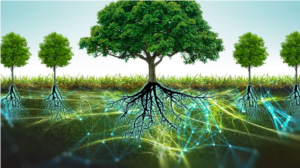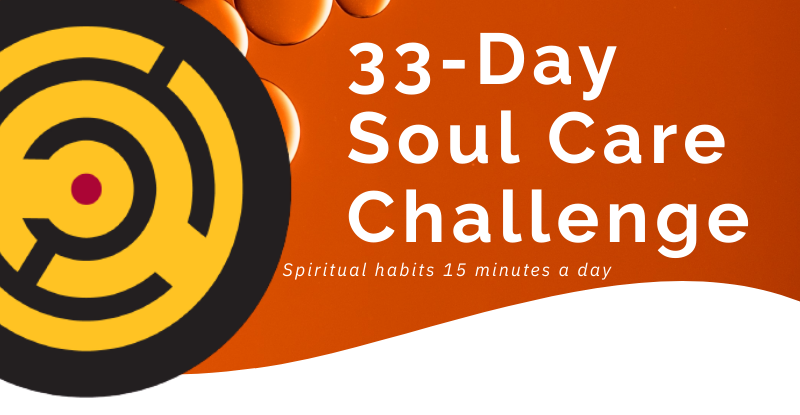A couple decades ago, Dr. Suzanne Simard, Professor of Forest Ecology at University of British Columbia, discovered that trees “talk” to each other. Their speech is inaudible to us, but below-ground they are busy sending warning signals about imminent threats, offering nutrients to sick or struggling neighbors, and nurturing their kin. And in case you’re wondering whether they can only speak the language of their own species, some of Simard’s early experiments demonstrated that different kinds of trees can communicate with each other.
 By analyzing the DNA in root tips and tracing the movement of molecules through underground conduits, Simard has discovered that fungal threads link nearly every tree in a forest — even trees of different species. Carbon, water, nutrients, alarm signals and hormones can pass from tree to tree through these subterranean circuits.
By analyzing the DNA in root tips and tracing the movement of molecules through underground conduits, Simard has discovered that fungal threads link nearly every tree in a forest — even trees of different species. Carbon, water, nutrients, alarm signals and hormones can pass from tree to tree through these subterranean circuits.
Resources tend to flow from the oldest and biggest trees to the youngest and smallest. Chemical alarm signals generated by one tree prepare nearby trees for danger. Seedlings severed from the forest’s underground lifelines are much more likely to die than their networked counterparts. And if a tree is on the brink of death, it sometimes bequeaths a substantial share of its carbon to its neighbors.
Community is about authentically connecting with others.
